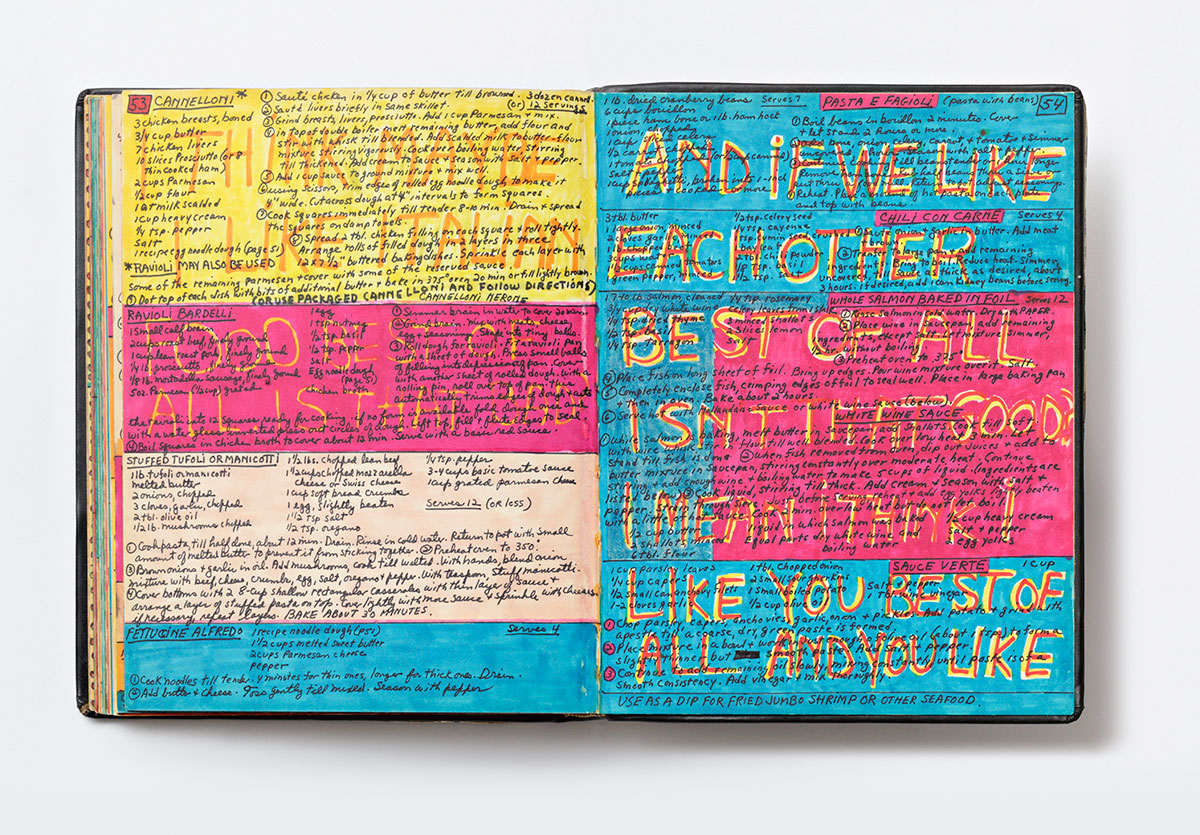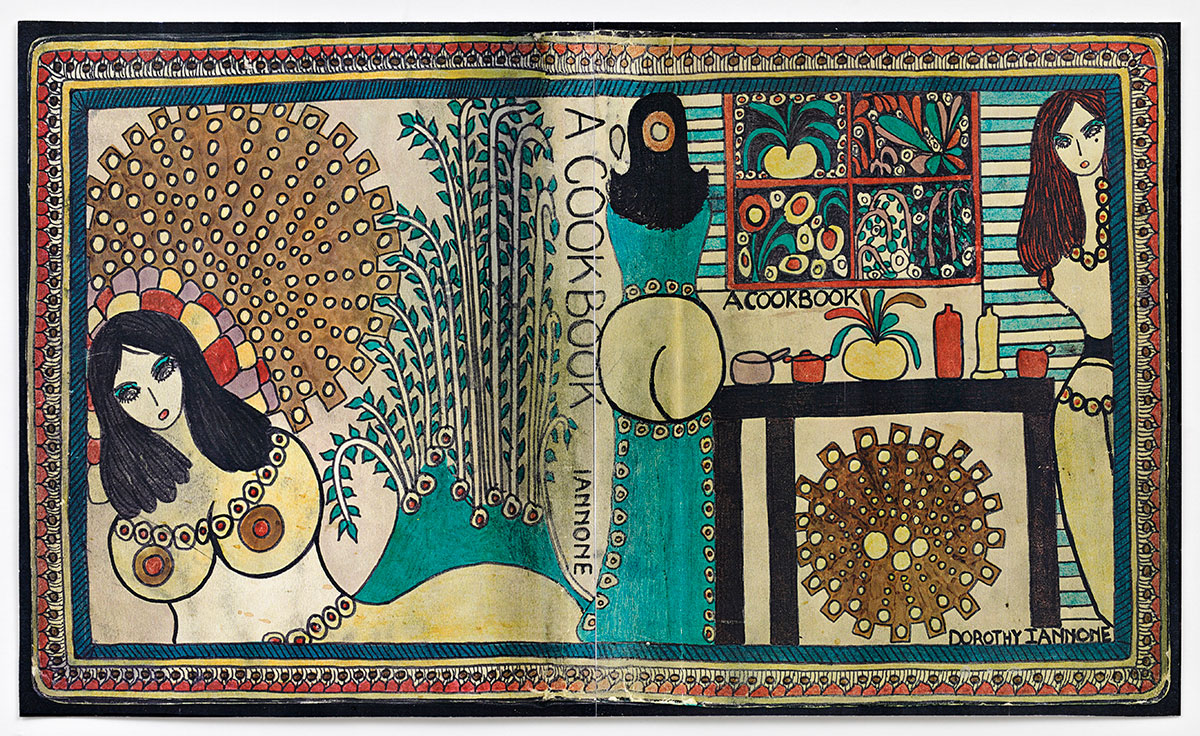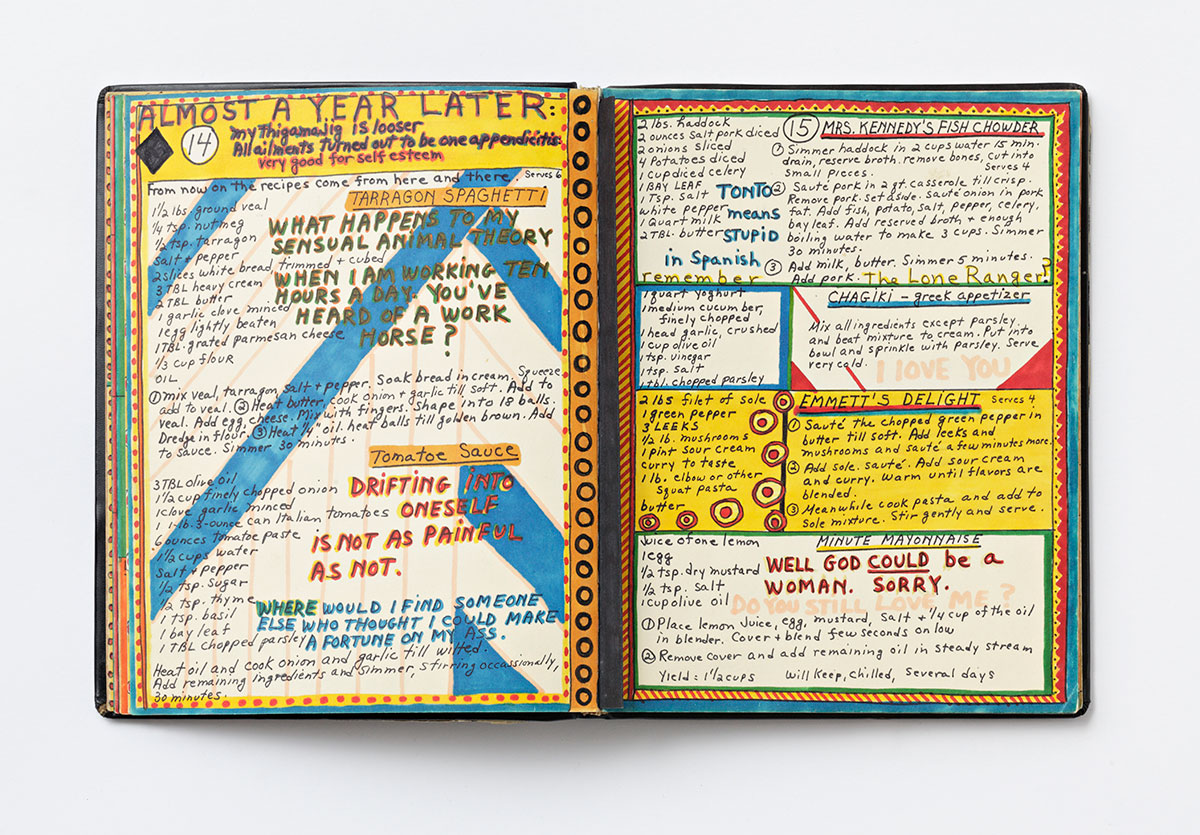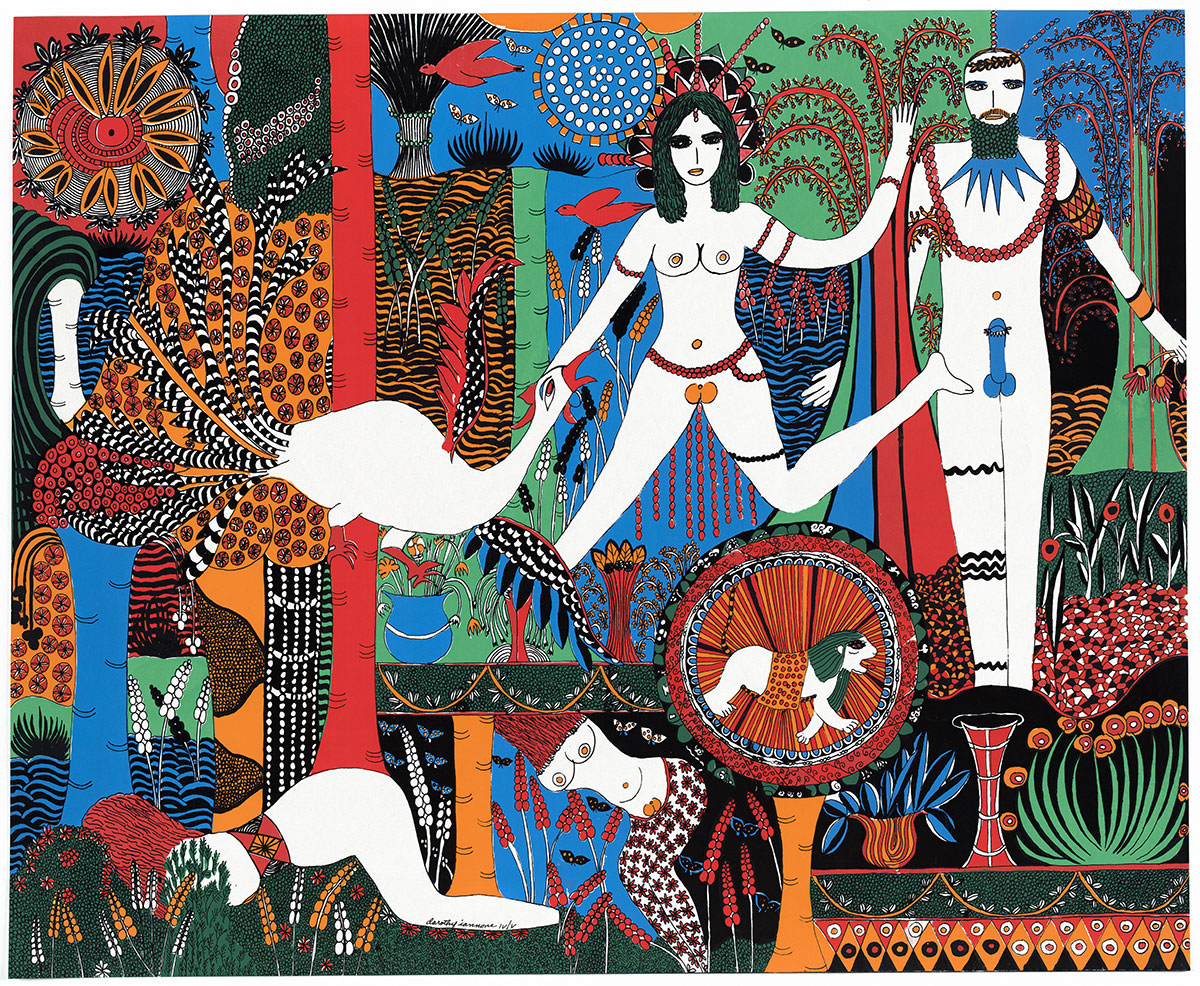PREVIEW: Dorothy Iannone
 Since the 1960s, Dorothy Iannone has attempted to represent ecstatic love, the union of gender, feeling, and pleasure. Today her oeuvre, which encompasses painting, drawing, collage, video, sculpture, objects, and artist’s books, is widely recognized as one of the most provocative and fruitful bodies of work in recent decades in terms of the liberalization of female sexuality, and political and feminist issues.
Since the 1960s, Dorothy Iannone has attempted to represent ecstatic love, the union of gender, feeling, and pleasure. Today her oeuvre, which encompasses painting, drawing, collage, video, sculpture, objects, and artist’s books, is widely recognized as one of the most provocative and fruitful bodies of work in recent decades in terms of the liberalization of female sexuality, and political and feminist issues.
By Dimitris Lempesis
Photo: Louisiana Museum Archive

Over six decades, Dorothy Iannone has celebrated love and freedom in a narrative universe of text and images. As Fluxus artist Robert Filliou declared as early as in 1972, “She is a freedom fighter, and a forceful and dedicated artist, skillfully blending imagery and text, beauty and truth. Her aim is no less than human liberation.” A narrative element fed with personal mythologies, experiences, feelings, and relationships runs through all of her work, unified by her distinctive colorful, explicit, and comic book style. Freedom, liberated sexuality, ecstatic unions and eros in the broadest possible sense are central themes of Dorothy Iannone’s art. Merging the personal and the mythological, Iannone’s work is often based directly on her own life and experiences, while drawing on a wealth of historical and literary references. Text and images come together in Iannone’s colorful, ornamental universe. Like graphic novels, many of her works combine handwriting and images to tell the story – candidly and with humour invested in visual and verbal details. Iannone’s works flow from myriad historical representations of love relations, sex, ecstasy, freedom and existence across times, cultures and religions and her autofictional images contain references to antiquity, Greek vases, Egyptian art, Roman and Pompeian murals, the Indian Kama Sutra and tantra, Icelandic sagas, Christianity, Buddhism, world literature and film history. The exhibition presents a selection of Iannone’s art over six decades, including several key works. In addition to drawings and prints, the scope of her work is unfolded in paintings, cut-outs and three of her original video sculptures. Three brightly colored Statues of Liberty, made for New York’s High Line in 2018, are displayed as murals. Among the key works are two narratives, “The Story of Bern (Or) Showing Colors” (1970), and “The Icelandic Saga” (1978, 1983, 1986). Censorship has both directly and indirectly been a recurring phenomenon for the artist. She was fighting against it as early as in 1961, when her lawsuit against the US government brought an end to the ban on Henry Miller’s books. In 1969 D. Iannone also faced censorship during a group exhibition organised at Kunsthalle Berne by Harald Szeemann, when her “Ta(Rot) Pack” (1968-1969), a pack of tarot cards decorated with sexual depictions of her relationship with her partner, was pulled from the show. None of the other artists showed any support, with the exception of D. Roth, who refused to show his works in solidarity. The “Icelandic Saga” is a love story about the encounter between Iannone and the Swiss artist Dieter Roth. Meeting Roth, on a trip to Iceland in 1967, was life-changing, and the two were a couple for the next seven years. Serving as her muse, Roth appears as a character in many of Iannone’s works. Later partners perform a similar function. Some works feature Erik Bock, a Danish pastor who served at Copenhagen’s Holy Cross Church for 40 years. Central to the exhibition is “A Cookbook” (1969), a tour-de-force artist’s book mixing existential reflections and sundry thoughts into neatly lettered recipes. A mayonnaise recipe includes the following observation, “Well, God could be a woman. Sorry.” In Iannone’s signature style, the book is rich in details, sensuality and gender-policy statements, served salty, sour, bitter, umami and seductively sweet in this take on the classic cookbook format.
Dorothy Iannone was born in Boston, Massachusetts in 1933. She graduated from Boston University in 1957 with a B.A. in American Literature. She went on to study English Literature at the graduate level at Brandeis University. In 1958 she married the painter James Upham and the couple moved to New York City. The following year, Iannone taught herself to paint alongside her husband. Between 1963 and 1967 she exhibited with her husband at the Stryke Gallery, an exhibition space she ran with her husband in New York and traveling frequently to Europe and Asia. In 1961 she was arrested by U.S. Customs at the Idlewild Airport in Queens, New York for trying to import The Tropic of Cancer by Henry Miller, which was banned at the time. Iannone sued the U.S. Customs with assistance from the New York Civil Liberties Union, which caused her book to be returned and the ban on Miller to be lifted. On a trip to Reykjavik, Iceland in 1967, Iannone met the Swiss artist Dieter Roth. Iannone separated from her husband one week later. Iannone lived with Roth in Düsseldorf, Reykjavik, Basel and London until 1974. Roth became Iannone’s muse and features in much of her artwork. In 1969 the Kunsthalle Bern tried to censor Iannone’s work in the group exhibition Ausstellung der Freunde by requesting that she cover up the genitals of her figures. In protest Dieter Roth dropped out of the exhibition and the curator of the Kunsthalle Bern, Harald Szeeman, resigned. Iannone recalled the experience in the Fluxus publication “The Story of Bern or Showing Colors” (1970). Iannone’s first solo exhibition in the US, Lioness, was held at the New Museum in 2009. The majority of Iannone’s paintings, texts, and visual narratives depict themes of erotic love. Her explicit renderings of the human body draw heavily from the artist’s travels and from Japanese woodcuts, Greek vases, and visual motifs from Eastern religions, including Tibetan Buddhism, Indian Tantrism and Christian ecstatic traditions like those of the seventeenth-century Baroque. Her small wooden statues of celebrities with visible genitals, including Charlie Chaplin and Jacqueline Kennedy, especially display with the artist’s interest in African tribal statues. The explicit nature of Iannone’s work frequently censored in the 60s, 70s, and 80s. The artist said of the early censorship of her work: “When my work was not censored outright, it was either mildly ridiculed or described as folkloric, or just ignored.”
Photo: Dorothy Iannone, A Cookbook, 1969 (Spread), Artist’s book, felt pen on Bristol board, 69 sider / pages, Courtesy the Artist, Air de Paris, Romainville and Peres Projects, Berlin, © Dorothy Iannone, Photo: Hans Georg Gaul
Info: Curator: Tine Colstrup, Louisiana Museum of Modern Art, Gl Strandvej 13, Humlebæk, Denmark, Duration: 25/5-11/9/2022, Days & Hours: Tue-Fri 11:00-22:00, Sat-Sun 11:00-18:00, https://louisiana.dk/






